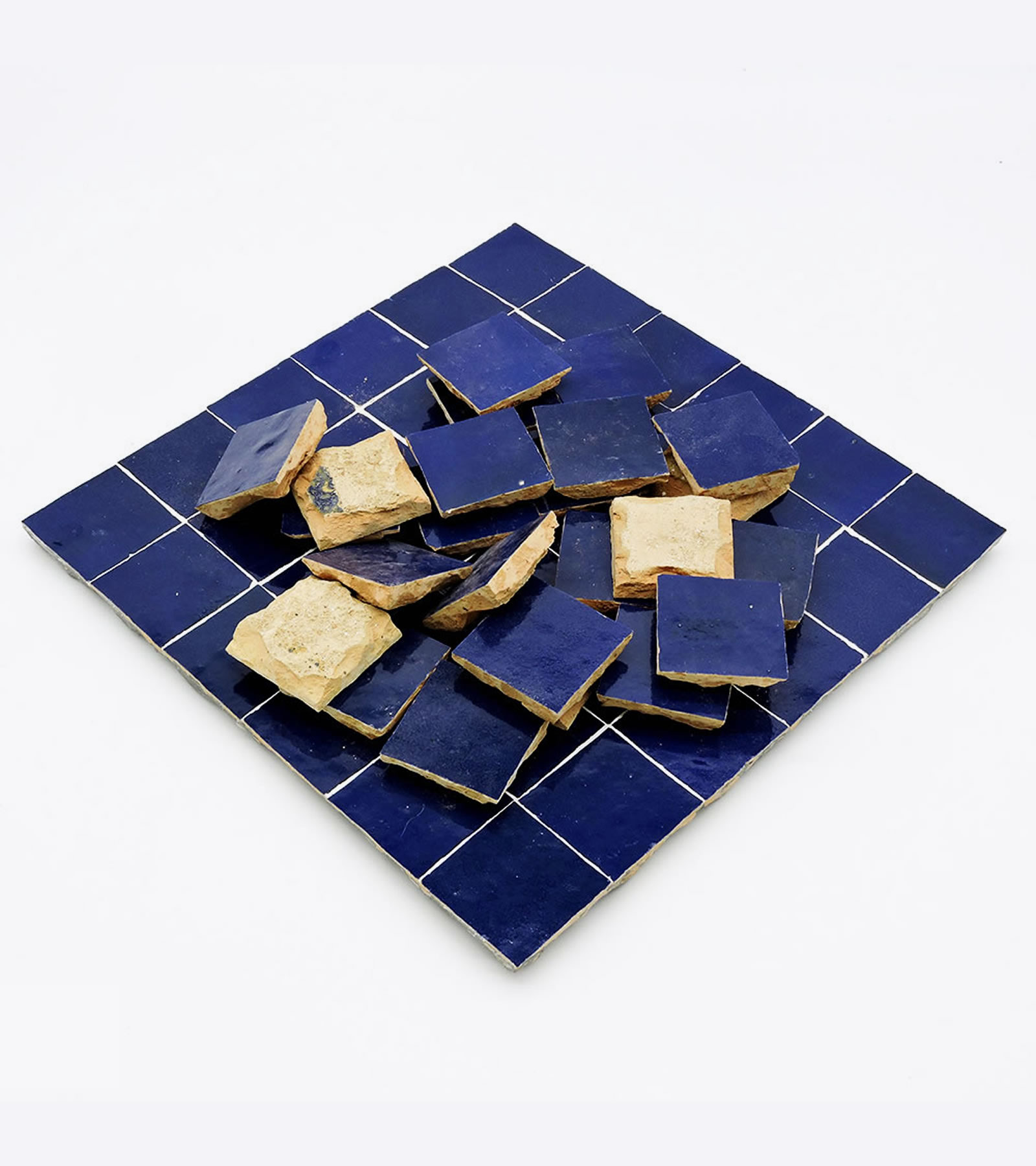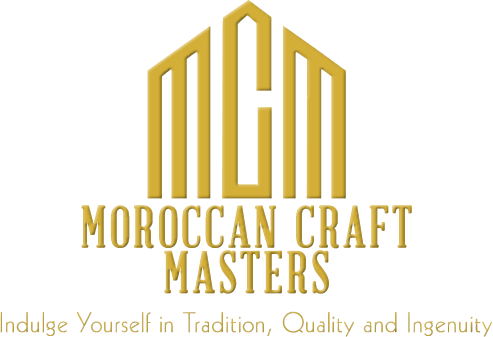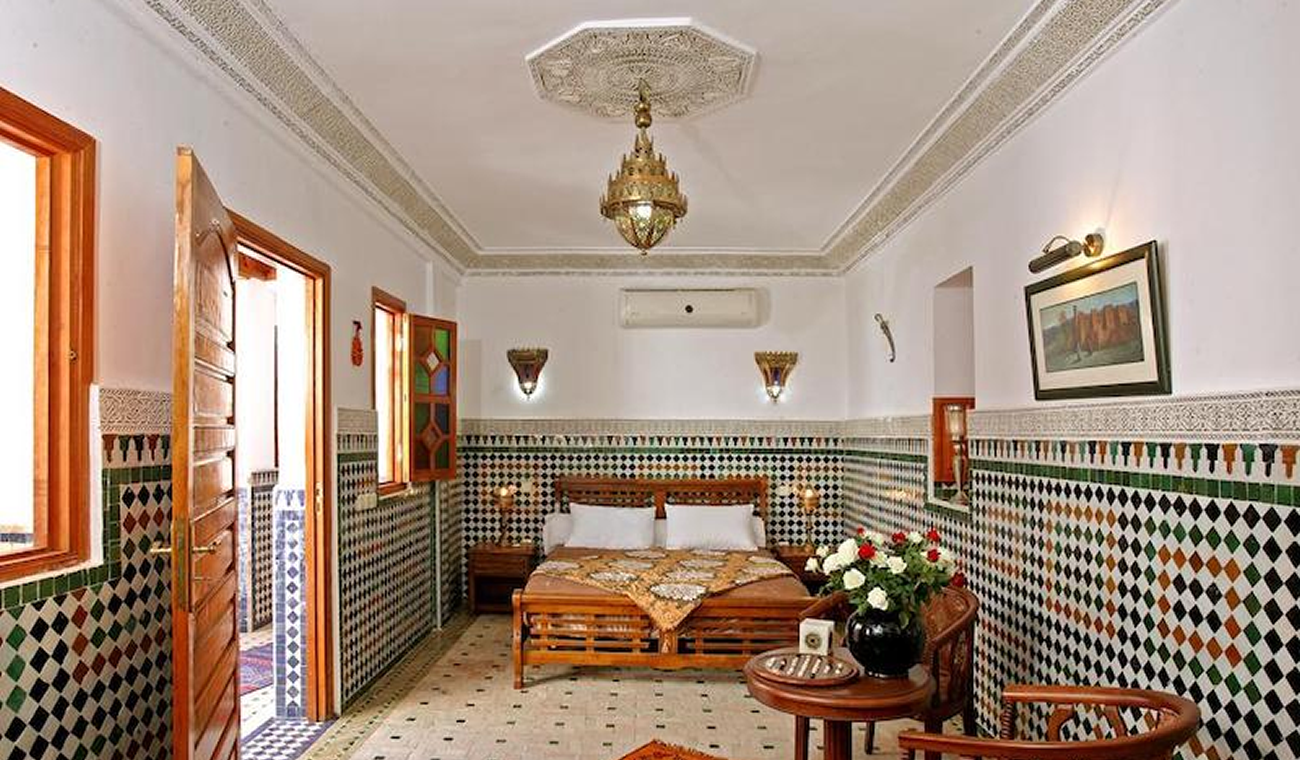Moroccan Mosaics: A Creative Blend of Art, Nature, and Mathematics
New York – Mathematicians and scientists can spend a lifetime’s work identifying and evaluating patterns. The golden ratio is a set of numbers that occur in nature in a specific pattern.
The ratio, also known as the Fibonacci sequence, dictates the arrangement of branches in a tree and the number of petals on a flower. The golden ratio is an overt reminder of the ways that math plays into everyday life, and of its effortless beauty.
I thought about the beauty of mathematics as I stood in the courtyard at the University of al- Qarawiyyin, the oldest university in the world, in the Fez medina. I was looking at a walled pattern designed with hundreds of small stones, entranced by its beauty and fascinated by its perplexing mathematical structure.
The brilliant colors invoked feelings that I could neither explain nor comprehend. It was just a pattern, but for a moment the world receded and I was alone with the marvelous imagery.
I escaped my trance and decided I must know more about the ancient Islamic tiling. I wanted to know how it was created, what disciplines contributed to its creation, and what fantastic mathematics hid behind its beauty.
I discovered that I was looking at “zellige,” meaning little polished stone in Arabic. Tiles lined the courtyard’s walls, floor, and central fountain. Zellige is an amazing feat of the Islamic world, dating back to the 8th century. The University of al-Qarawiyyin was built in 859, so I was looking at some of the art’s earliest examples.


The art of zellige has its own history
The tiling art began with simple shapes and patterns influenced by Greek and Roman mosaics. As time went on, the patterns became more and more complex. By the 17th century, intricate designs included stars with up to 16 points.
Creating zellige involves the combined talents of artists, artisans, and mathematicians. It represents the incredible innovation of the ancient Islamic world. The mosaics are drawn with ruler and compass and are generated with simple underlying patterns made from circles and squares. These are combined, duplicated, overlaid, and expanded upon to create the final product.
The resulting patterns are tessellations, a repetition that creates an illusion: The image seems to extend beyond the boundaries of the wall it was laid upon, invoking a sense of infinity. The grandness of the seemingly infinite art had its desired effect on me. I was humbled.
Zellige may have evolved due to aniconism, or the prohibition of imagery of sentient beings that is found in much of Islam. The mosaics were a method for people to portray religious stories and values that they could not depict through realism. The mosaics are intended to invoke feelings of faith and passion in the viewer, similar to how religious scenes may act in another culture. Each shape and color has a purpose.
A marriage of art and math
Zellige also represents the ancient Islamic world’s mathematical capabilities and advancements. I was not the only one fascinated by the combined beauty and complexity of zellige. Many have questioned how the two play together, and what makes the art so captivating. There is even a realm of mathematics dedicated to patterns and mosaics, a subject zellige falls neatly into.







Read recent articles
Announcing the Launch of our New Website!
Morocco: a land of unique crafts and art !
Exploring the Tile while Traveling Morocco